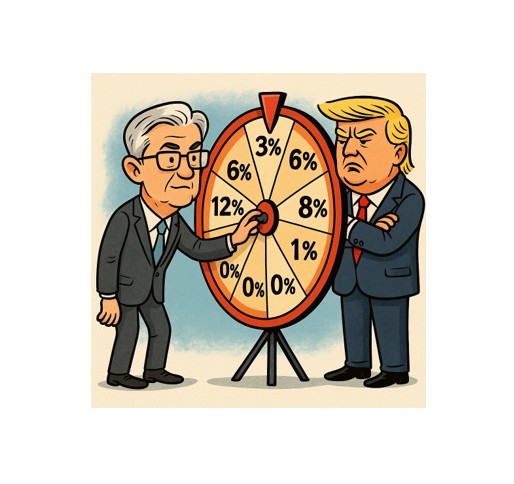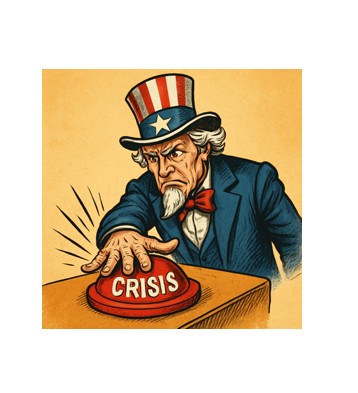Weekly Blog #13
“We should be at least two to three points lower—if things later change to the negative, increase the rate.” President Donald Trump
It’s no secret that President Trump has been extremely unhappy with Federal Reserve Chair Jerome Powell and his reluctance to lower interest rates. Trump, a businessman, understands how rates affect economic activity and asset values: the lower the rate, the faster the growth and the higher the present value of assets.
But the Fed, a private, non-governmental entity, is supposed to be independent and immune to political pressure. Its dual mandate is to keep inflation low and stable while promoting full employment. Those two goals are often at odds with one another as the cure for inflation is tight monetary policy (higher rates + slower money growth), whereas the prescription for economic growth is the opposite (lower rates + looser money).
In 2012 the Fed officially adopted a 2% inflation target. Today, inflation is defined as “a sustained rise in the general price level of goods and services, which reduces the purchasing power of money.” But that wasn’t always the definition.
For decades, “inflation” meant an increase in the money supply relative to output. A 1919 Federal Reserve Bulletin stated: “Inflation is the process of making additions to currency not based on a commensurate increase in the production of goods.” In other words, inflation was a noun describing monetary policy—not a verb describing rising prices. Over time, policymakers and academics alike reshaped (reimagined?) the definition, detaching it from money supply and tying it to consumer prices.
Fast forward sixty years, and by 1978 the Fed was blaming inflation on a falling dollar, rising wages, and even the weather. Record scratch! The earlier Fed got it right: printing money devalues the dollar. The later Fed confused cause and effect—whether through error or convenience.
While the Fed emphasizes interest rates—specifically, the federal funds rate—rates are simply the valve used to regulate the flow of money (money supply). Cheap borrowing fuels economic expansion; expensive borrowing slows it.
Trump knows the short-term effect of falling interest rates: more growth and higher asset prices—stocks, bonds, and real estate. He’s also keenly aware that the single biggest threat to his legacy is a souring economy. That’s why he’s willing to risk tomorrow’s inflation for today’s boom.
At Jackson Hole last week, Powell hinted at rate cuts as early as next month. Markets pounced: futures priced in an 87% chance of a September cut and a 48% chance of another in December. Stocks rallied. Bonds rallied. Mortgage rates? Meh. They barely budged—slipping just three basis points from 6.61% to 6.58%.
The Fed’s target, federal funds rate, has tremendous influence over short-term rates, and signals the central banks’ policy intentions. However, long-term rates, such as the 10-year Treasury, which mortgage rates are tethered to, are market-driven. Hence, Powell’s dovish language had a big impact on short-term rates, but the mortgage market effectively yawned.
The current policy trajectory won’t move long-term rates much, meaning mortgage rates will likely remain where they are. Barring a return to quantitative easing—where the Fed expands its balance sheet, creates money out of thin air, and buys long Treasuries and/or mortgage-backed securities to drive yields down—mortgage rates won’t shift much in the short run.
What would move rates? Positive/negative changes in the inflation indices; CPI, PPI & PCE. If price levels were to drop to/below the Fed’s target rate of 2%, then Treasury notes and, consequently, mortgage rates, would almost certainly drop from current levels. If, however, prices continue to rise from their current levels, long bond yields will likely rise and so too will mortgage rates.
Currently, the odds of a Fed rate cut are high. The odds of cheaper mortgage rates? Slim.
Mark Lazar, MBA
CERTIFIED FINANCIAL PLANNER™









